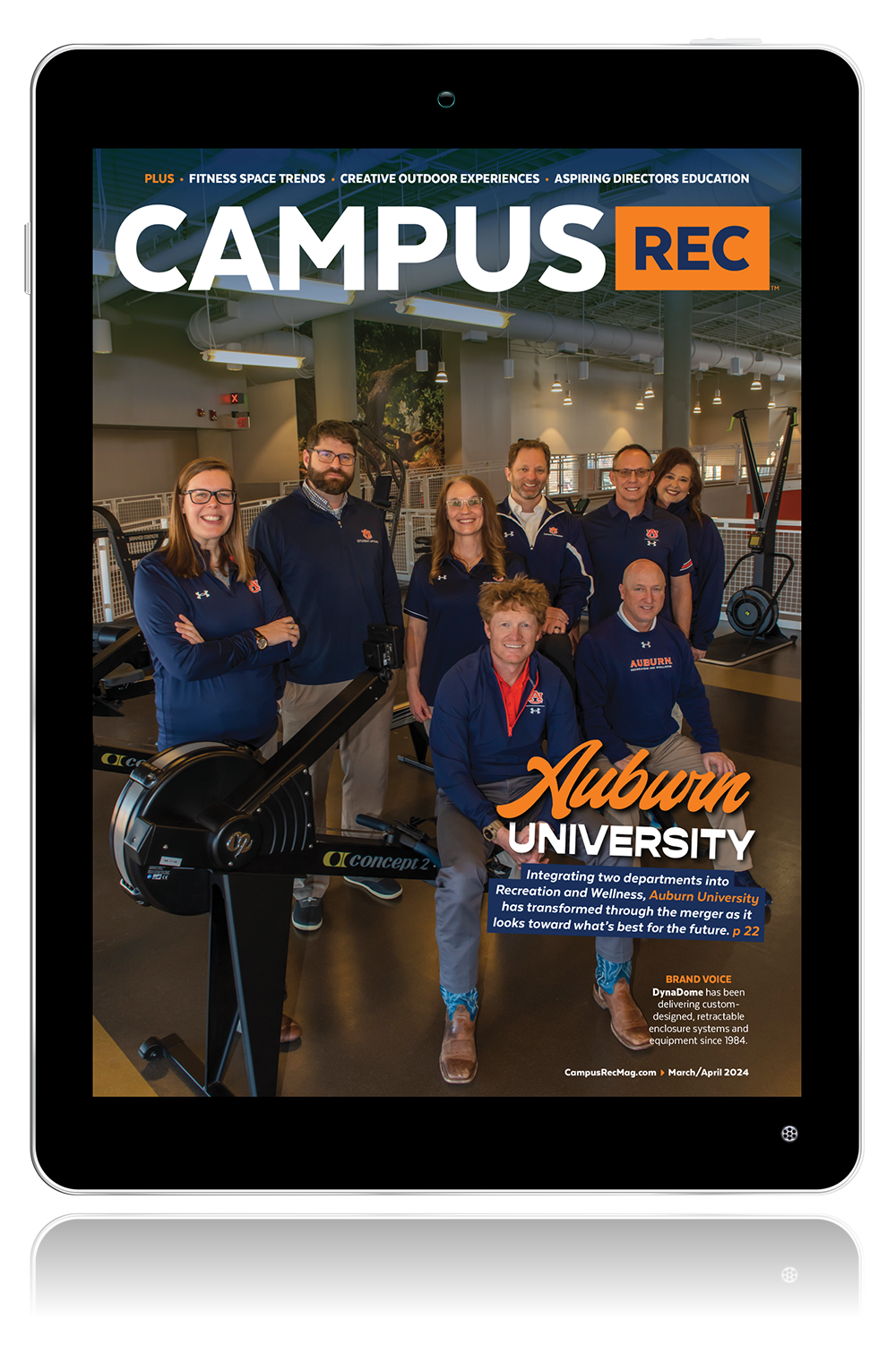Safety should be No. 1 priority of every college facility, and one of the most important events to prepare for is an active shooter emergency. Due to the irregular nature of active shooter situations, it’s very important to have the right protocols in place in the event of an active shooter emergency.
Campus Rec spoke with Marty Dempsey, the assistant director of facility operations at the University of Florida, about the importance of active shooter emergency protocols and how to implement these strategies with your staff:
CR: What protocols do you have in place for active shooter situations?
MD: The Department of Recreational Sports has partnered with the University of Florida Police Department to discuss the community response checklist that has been established on campus. The checklist includes tips on securing the immediate area, contacting authorities, how and what to report, and police response. Staff is encouraged to seek secure area, calm, quiet and reassure others, and treat any injured with their first aid training.
CR: Are there any challenges in implementing safety protocols?
MD: It is getting harder for law enforcement to predict the origin of the next threat, which certainly presents a challenge. Assailants in some recent incidents on college campuses across the country have not always been students or employees. We staff and manage several different facilities, each with their own unique layouts, entrance points, staffing levels, etc. There is also the challenge of always feeling underprepared since no amount of training can truly simulate the stress and horror of an actual active shooter incident.
CR: How do you educate your staff on these procedures?
MD: We have an active Risk Management Committee within our department, comprising professional staff members across each of the program areas. That committee has developed a code system for communicating different threats that we could face, anything from an active shooter to a fire evacuation to an injured participant. Each of these codes has a three-tiered response for students and staff alike to follow. These procedures are reviewed annually, with training exercises developed to teach student staff consistently across the department.
CR: How do you educate your students on these procedures?
MD: We train our student staff annually based on current protocols, discussing topics such as how an active shooter is defined, the mentality of the assailant, and response tips that can help neutralize the threat and save lives. A captain from the University of Florida Police Department has presented to our staff, which was also recorded for future internal use, and helped answer any questions or concerns student staff might have. We also discuss unique challenges for each facility we serve, including presenting options for the most secure areas to gather people in the event of an incident.
CR: Do you have any advice for other campus rec departments?
MD: Active shooter incidents are difficult to prepare for and even more difficult to predict. Therefore, it takes a concerted, intentional and collaborative approach to help build a response plan. Partnering with our university police was a great first step to not only learn about established campus protocol, but to help brainstorm unique challenges we might face in our spaces. The department-wide risk management committee has also helped solidify a communication plan for all types of threats, as well as a consistent message and training agenda to train staff. It has been just over a year since our risk management codes were developed, and the response from our 700 student employees has been incredible. They have not only retained the information on the code definitions and three-tiered response, but many student leaders are getting trained to teach new staff as they are hired. In short, make it a priority and keep the conversation going.










